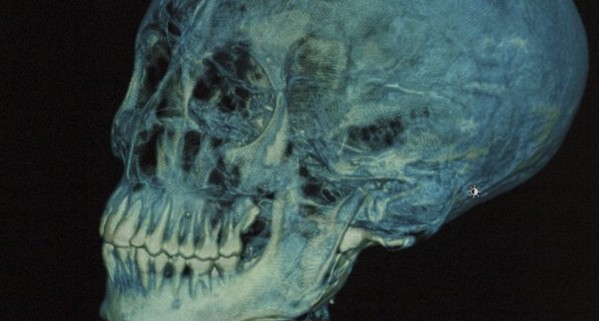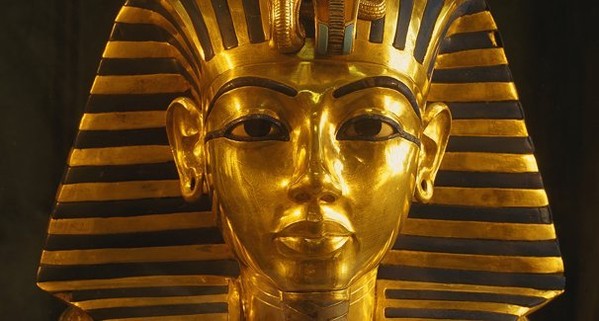|
National Geographic
King Tut's Curse
With almost perfect timing with the soon to
be released exhibition at the Melbourne Museum, Tutankhamen and the
Golden Age of the Pharaohs, King Tut's Curse by National Geographic is
the perfect precursor to not only get a taste of the exhibition but
learn the possible cause of one of the world's most famed pharaohs. Not
only is it a great presentation but it's a documentary that can be
watched many times without the information becoming too overbearing.

Since Tutankhamen was discovered by Howard
Carter on November the 22nd, 1922, a mystery revolved around the young
King's death which also spawned the Hollywood cliché of the curse of the
mummy. This
documentary attempts to explain the many theories of his death byusing scientific evidence with the help of a CT-scan machine
to not only see what the pharaoh may have looked like but finally give a
definitive answer to his death. Another theme that runs through the
documentary is the death of Lord Howard Carnarvon which may have been
caused by ancient micro organisms or something far more sinister.
As Tutankhamen was most likely the son of
Akhenaten, a pharaoh who attempted unify religion in Egypt, this was
generally the theory behind the death of King Tutankhamen.
Revenge by the people or the priests for removing their gods, however as the documentary
collects the scientific facts, we soon learn that that Tutankhamen had
an oblong shaped head, a wisdom tooth growing on an angle, one leg
longer than the other, damage to not
only the skull but also other skeletons. The evidence slowly begins to
add up, especially in relation to this death.

Was it a battle with the Hittites or a
chariot accident? The documentary attempts to dispel many of
these myths and it appears that Tutankhamen was a slender, well fed
Royal boy who unfortunately died from infection due a knee injury and
not the mysterious theories of revenge or nefarious murders. King Tut was a normal boy who
died in a time when medicine was quite limited and the documentary
nicely finishes with the face of what Tutankhamen may have looked
like... a face that is over 3,330 years old. This is a very insightful
documentary from start to finish.
Video, Audio & Special Features
Presented in 16:9 widescreen, King Tut's
Curse is unfortunately cursed with a considerably amount of grain
throughout the DVD. Thankfully it does not distract too much with the
amazing images of the boy king. Audio supports Dolby Digital 2.0 which
sounds crystal clear and the presentation has a great soundtrack. For special features, there is a bonus segment
(50 minutes) entitled Tut's Treasure Tour that is basically an snapshot
of the upcoming exhibition, Tutankhamen and the Golden Age of the
Pharaohs and how they managed to create one of the most popular
exhibitions in museum history. Fascinating to say the least.

If you're interested in ancient Egypt, than
this is one documentary that we could happily recommend to your
collection that actually gives a new light on the boy king plus an extra
bonus feature on how they managed to organise the exhibition,
Tutankhamen and the Golden Age of the Pharaohs. |